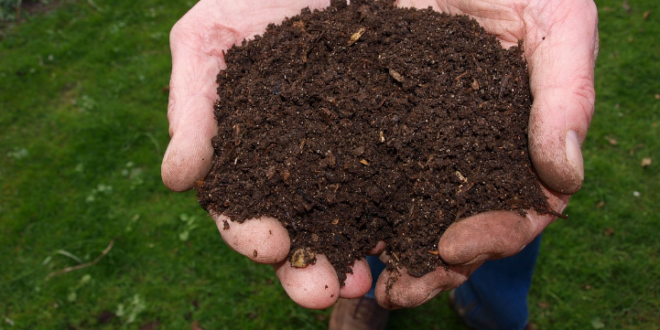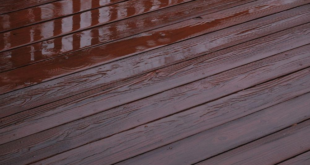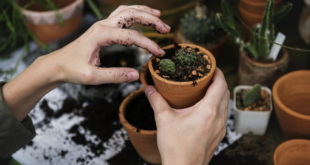Composting is a simple yet powerful process that transforms everyday organic waste into nutrient-rich fertilizer for your garden. By recycling kitchen scraps, yard waste, and other biodegradable materials, you can reduce your environmental footprint while nourishing your plants. Whether you’re new to composting or looking to improve your methods, here’s a guide on the best way to compost, so you can create that prized “black gold.”
1. Choose Your Composting Method
There are several methods of composting, each with its benefits depending on your space and goals. The two most common types are:
- Traditional Composting (Cold Composting): This is the most basic method. Simply add organic materials to a compost pile or bin, and nature does the work. This process can take several months to over a year but requires little effort beyond occasional turning.
- Hot Composting: A more involved method, hot composting accelerates the decomposition process by maintaining higher internal temperatures (130-160°F). By carefully managing the ratio of materials, moisture, and aeration, you can produce finished compost in as little as 4-8 weeks.
Other methods include vermicomposting, which uses worms to break down organic matter, and Bokashi composting, an anaerobic fermentation method ideal for smaller spaces or indoor use.
2. Choose the Right Location
When setting up your compost pile or bin, choose a well-drained location with good air circulation. Ideally, it should be in a spot that receives partial sunlight to keep the pile warm, but not too much direct sun, as excessive heat can dry out the compost. Make sure the compost is easily accessible from your kitchen and garden for adding materials and using the finished product.
3. Understanding the Balance: Green and Brown Materials
The success of composting hinges on the right balance of “green” and “brown” materials.
- Greens (Nitrogen-rich materials) provide moisture and help heat up the pile. Examples include:
- Fruit and vegetable scraps
- Coffee grounds and tea bags
- Fresh grass clippings
- Manure from herbivores (chickens, rabbits, etc.)
- Browns (Carbon-rich materials) add structure and help with aeration, promoting decomposition. Examples include:
- Dry leaves
- Straw and hay
- Paper and cardboard (shredded)
- Wood chips and sawdust
For optimal results, aim for a ratio of roughly 3 parts browns to 1 part greens. Too much nitrogen can cause the pile to become slimy and smelly, while too much carbon slows down decomposition.
4. Build Your Compost Pile
Once you’ve gathered your materials, it’s time to start layering. A proper compost pile is built in alternating layers of greens and browns, much like lasagna.
- Start with a base layer of coarse browns (twigs, straw) to promote drainage and airflow.
- Add a layer of greens (kitchen scraps, fresh plant material), keeping pieces small to speed up decomposition.
- Alternate layers, with browns always covering fresh greens to minimize odors and discourage pests.
- Water the pile lightly after every few layers. The compost should be as moist as a wrung-out sponge — not too wet, and not too dry.
If you are using a bin or compost tumbler, follow the same method of layering and moisture control.
5. Maintain and Turn the Pile
To keep your compost pile healthy and active, aeration is key. Every 1-2 weeks, turn the compost with a pitchfork or shovel to mix in oxygen, which accelerates the decomposition process. In hot composting, turning regularly also helps distribute heat evenly, ensuring that all parts of the pile break down properly.
If the pile dries out, add water; if it becomes too wet, add more brown materials to balance the moisture.
6. What to Compost (and What Not to)
To avoid problems with pests, odors, or slow decomposition, it’s important to know what you can and cannot compost.
- What to compost:
- Fruit and vegetable scraps
- Coffee grounds and tea bags
- Crushed eggshells
- Grass clippings and yard waste
- Leaves and straw
- Shredded paper and cardboard
- Wood chips, sawdust (untreated wood)
- What NOT to compost:
- Meat, dairy, and fish scraps (attract pests)
- Oils and fats
- Diseased plants
- Pet waste from carnivores (cats, dogs)
- Treated or painted wood
- Weeds that have gone to seed
7. Monitor the Temperature
If you’re aiming for hot composting, the internal temperature of the pile should stay between 130-160°F. The pile will naturally heat up as microbes break down the materials, but turning it regularly and ensuring a good mix of greens and browns helps maintain this heat. A compost thermometer can help you track temperatures and know when the pile needs to be turned.
8. Harvesting the Compost
Compost is ready to use when it becomes dark, crumbly, and earthy-smelling. It’s rich in nutrients, but free of visible food scraps or plant material. This process can take anywhere from 1-12 months, depending on your composting method and how often you turn the pile.
When the compost is finished, sift it to remove any large, undecomposed bits that can go back into the pile for further breakdown.
9. Using Your Compost
Compost can be used in a variety of ways to boost plant health and soil fertility:
- Mulch: Spread compost around garden beds to retain moisture and suppress weeds.
- Soil amendment: Mix it into the soil before planting to improve texture, drainage, and nutrient content.
- Potting mix: Combine compost with other materials like sand and perlite for a rich, organic potting soil.
- Compost tea: Steep compost in water to create a nutrient-rich liquid fertilizer for your plants.
Composting is one of the most sustainable and rewarding practices in gardening. With the right balance of ingredients, regular maintenance, and a bit of patience, you can turn your kitchen scraps and yard waste into valuable, garden-enriching compost. Whether you’re growing vegetables, flowers, or houseplants, composting can help you reduce waste, promote healthy soil, and enjoy a more productive garden year after year.
 Gardeners Club The Gardeners Club is a free to join online club for everyone with an interest in gardening and gardens.
Gardeners Club The Gardeners Club is a free to join online club for everyone with an interest in gardening and gardens.






